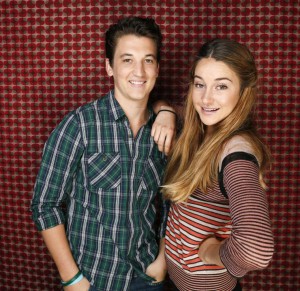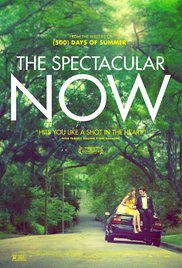Spotlight: Shailene Woodley and Miles Teller
Allegiance in Allegiant
By Chris Kessinger (The Film Freak)
How many actors have done multiple movies together? Certainly the duos of Jack Lemmon/Walter Matthau, as well as Woody Harrelson/Wesley Snipes come to mind. But how many have been in the same movie five different times? That’s the circumstances surrounding the two stars of the newest Divergent series film “Allegiant”, out in theaters March 18th. The two are the closest of friends outside of cinema, but have etched an on-screen chemistry that have made them the representatives for best duo of the current generation of films. Many are familiar with their most popular of titles, but where did their magic begin? Lets take a look at their first film together:
The Spectacular Now (2013)
“500 Days of Summer” Writer Scott Neustadter pens this screenplay based on the best selling novel by Tim Tharp about the biggest year of change in a teenager’s life; the final year of high school. Sutter Keely (Teller) lives in the now. It’s a good place for him. A high school senior, charming and self-possessed, he’s the life of the party, loves his job at a men’s clothing store, and has no plans for the future. A budding alcoholic, he’s never far from his supersized, whiskey-fortified thirst-master cup. But after being dumped by his girlfriend (Brie Larsen), Sutter gets drunk and wakes up on a lawn with Aimee Finecky (Woodley) hovering over him. She’s different: the “nice girl” who reads science fiction and doesn’t have a boyfriend. While Aimee has dreams of a future, Sutter lives in the impressive delusion of a spectacular now, yet somehow, they’re drawn together on a colliding course of Aimee’s hopes with Sutter’s negative influences.
During an age where teenage films are more concerned with recycled plots, “The Spectacular Now” shines with originality in plot device, while showcasing a fresh cast of up-and-coming stars just itching to steal the light. Directed by James Ponsoldt, the film tackles the kinds of issues with teenagers that other films in the post-John Hughes era were afraid to expose. The subject of alcoholism is presented with a very frightening context, as it’s a slow underlying process to costing Sutter everything he has. The brilliance of this direction is that it’s done with such a subtle touch that it never feels overdone or repetitive in storytelling. The film is also brilliantly structured with several surprises behind every corner. Neustadter’s script leaves enough room creatively to always keep the audience guessing with its characters and the many ever-changing situations they find themselves in. By the time the film is over, you will think this is anything but your typical teenage drama. 436
One of the many impressive layers to the film is in the many varying performances from a next generation cast of A-listers. This is Teller’s first performance of meaningful range before he went on to the Oscar Best Picture nominee “Whiplash”. Teller’s Sutter still effortlessly displays that Cusack-esque personality that is hard to hate no matter how naive he acts. Woodley displays a childlike innocence that makes it easy for anyone watching to fall in love with her. The chemistry between them feels like best friends from the get-go because they work so well off of each other, going line for line in real, honest teenage dialogue. One scene in particular is an uncut, unedited continuation for over three and a half minutes between them. I don’t care who you are, that’s impressive. In addition to this, the film boosted the careers of big timers today like Mary Elizabeth Winstead, Jennifer Jason Leigh, Brie Larsen, and Bob Odenkirk to round out one of the strongest ensembles I have ever seen for a teenage drama.
What matters most to me is that the production design led by director of photography Jess Hall (Hot Fuzz) really took the time to give a gorgeous background and cinematography to a film primarily about adolescence. The rich color scheme and tapestry in design gives the film a real mature feeling in tone that never sacrifices one without the other. There’s a kind of dreamy and glossy presentation to the wide angle shots of the town and surrounding landscapes where our protagonists take us. This is of course personal interpretation, but I feel like it is to give the impression that life around us may look like a fairytale, but what’s going on internally is the real truth. This is an appropriate theme to the kinds of novels Tharp has written in books, with most of them requiring a deeper look to see what’s really going on behind the beautiful towns with picket fences.
“The Spectacular Now” is anything but just another whimsical romantic teenage romp. Instead, it pushes through the cliches of a spoon-fed genre by signaling that fear of growing up, and more importantly who we will grow into.

